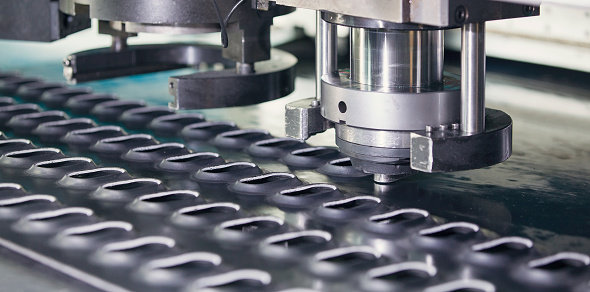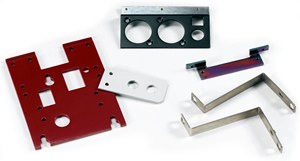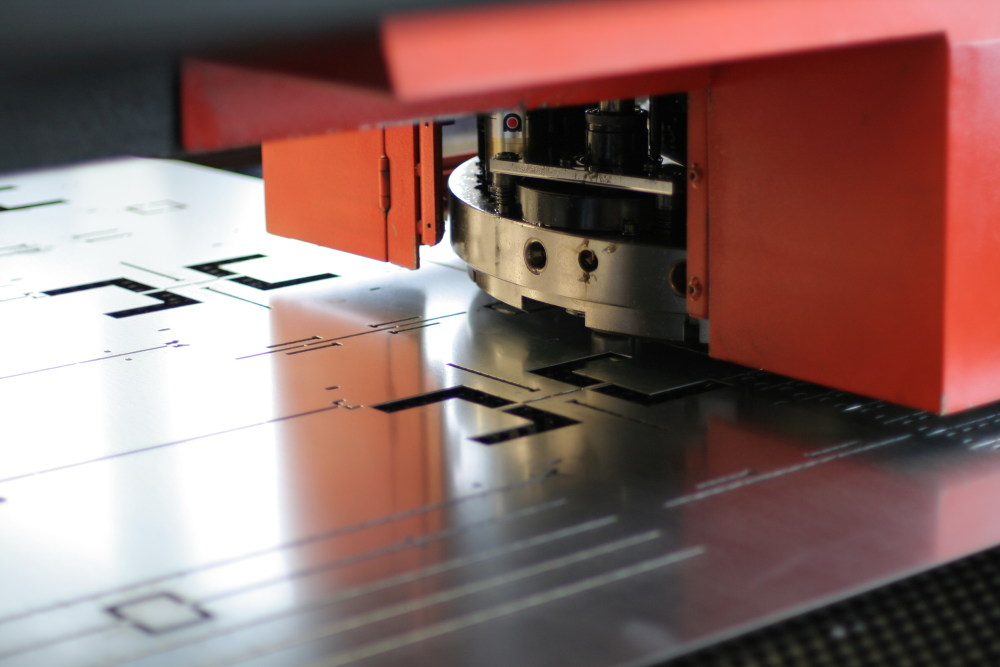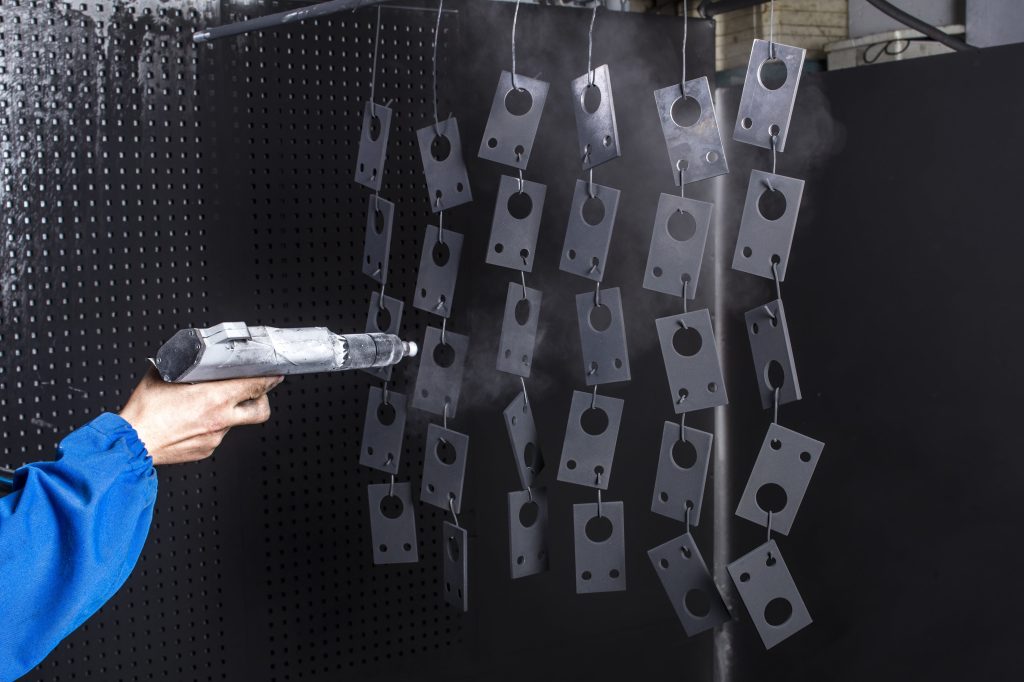USFAB offers a variety of metal punching services to fabricate almost any metal part or component for a wide variety of applications. Our range of additional services also enables us to provide single-source solutions for all your fabrication needs.
Metal punching applies high pressures to a flat metal sheet via a tool which presses the workpiece against a die to form the final net shape. Punching processes vary by product and may consist of one or several operations performed either simultaneously or sequentially.
The equipment used to perform these operations, known as punching presses, may be operated by either hydraulic or mechanical means. USFAB offers short run metal punching services for production runs of up to 20,000 components.

Benefits of Metal Punching
One of the main advantages of metal punching is its accuracy and ability to meet tight tolerances. Each stroke of the punching tool is precisely programmed to perform forming operations with a high degree of precision. This results in the creation of high-quality parts and components that meet or exceed industry specifications.
Since metal punching processes are fully automated, parts can be produced with significantly faster lead times and with a high degree of repeatable accuracy, enabling large-scale production runs to be performed without compromise on quality. The precision of the metal punching process also ensures that the vast majority of the stock material is used, resulting in the production of less scrap material. This combination of automation, speed, and waste reduction ultimately leads to a significant decrease in overall operating costs


Types of Punching
Depending on the requirements of the final product, punching may entail one or more of the following operations:
Blanking – The process of cutting the stock metal sheet or coil into smaller pieces in preparation for punching operations. The material that is removed is called the blank.
Piercing – Typically used when slots, holes, or other cutouts are required on the workpiece. This operation can be performed during blanking.
Bending – Involves using a specially designed die and ram to apply a force to a workpiece to create bent angles.
Forming – Similar to bending, except multiple bends are created on the workpiece simultaneously to create a part with a specific shape.
Air Bending – Involves using a punching tool to force the metal sheet into a V-shaped die. This process is named such because the angle of the V-opening is typically deeper than that of the final shape.
Bottoming and Coining – These processes are similar to air bending. However, significantly more pressure (2 to 30 times more) is used to create a permanent bend in the material.

Ready to get started with USFAB on your next metal fabrication project? Contact a member of our team today.
